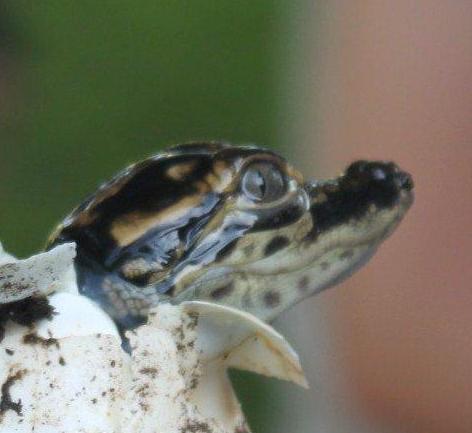|
Pond Life of Brazos Bend State Park
Fly Larvae: Order Diptera
|
Diptera are characterized by a single pair of wings and usually
sucking mouth parts. Many insects that have fly in their name,
such as dragonflies, damselflies, fireflies, and mayflies are not
flies at all , but belong to different orders.
Flies undergo complete metamorphosis. The larvae do not have
wings, and are usually wormlike in appearance. In some species,
the larvae are aquatic. The most common examples of Diptera that
we find in the ponds in Brazos Bend State Park are mosquito larvae
and midge larvae. At certain times of the year, horse fly and
soldier fly larvae are also found.
|
|
Mosquito larvae are very small, covered with small spines. They
are usually about 5 mm long. They have a large head and the thorax
is wider than the abdominal segments. They usually swim near the
surface of the water. They move about by bending and unbending
their bodies, which gives them the name wigglers.
Mosquito larvae are food for fish, and for other aquatic
insects.
|
|
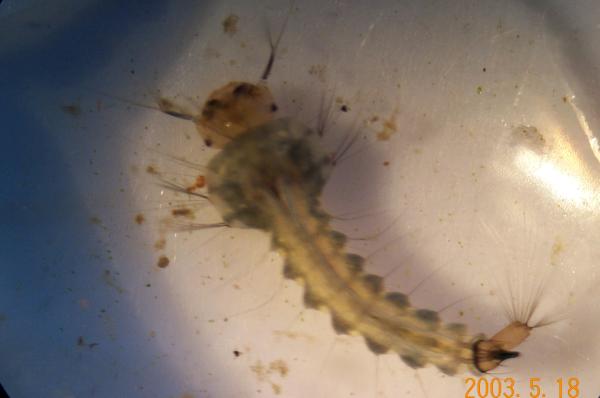
Mosquito (Culicidae) Larva
|
|
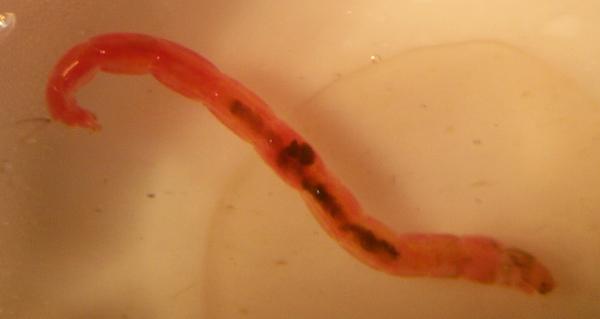
Non-biting midge larva – approximately 4 mm long
|
|
Non-biting midges make up the family Chironomidae. They
are often bright red in color, and are sometimes called
bloodworms. The red color is because they are one of the few
insects that have hemoglobin in their blood. This means that they
can carry oxygen in their blood.
They range in size up to 20 mm long. Their bodies are segmented
with a pair of appendages that look like legs at each end. They
also have several hairs on their last segment.
|
Bloodworms are usually burrowers in the mud at the bottom of the
pond. They feed primarily on decaying matter. They are eaten by many
other aquatic insects.
|
Horse fly larvae (family Tabanidae) are common in the ponds of
Brazos Bend State Park in early Summer.
They are light colored, about 1 inch long, with no legs. The
head is small and has 2 sharp fang-like appendages that can slash
downward to cut its prey. It has stumps called proto-legs on each
segment of its body that it uses for pushing itself along. They
resemble the larvae of soldier flies, but lack the mass of hairs
on the last abdominal segment of a soldier fly larva.
Horse fly larvae are predators. They prey principally on
aquatic worms, but have been known to attack larger animals.
|
|
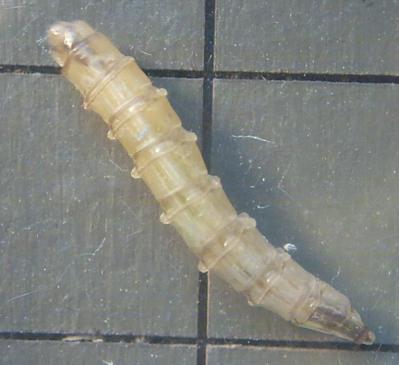
Horse fly Larva (Tabanidae) 18 mm long
|
|
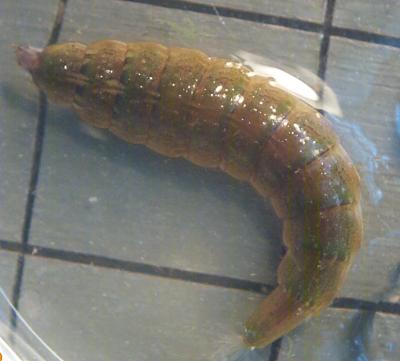
Soldier fly Larva 25 mm long
|
|
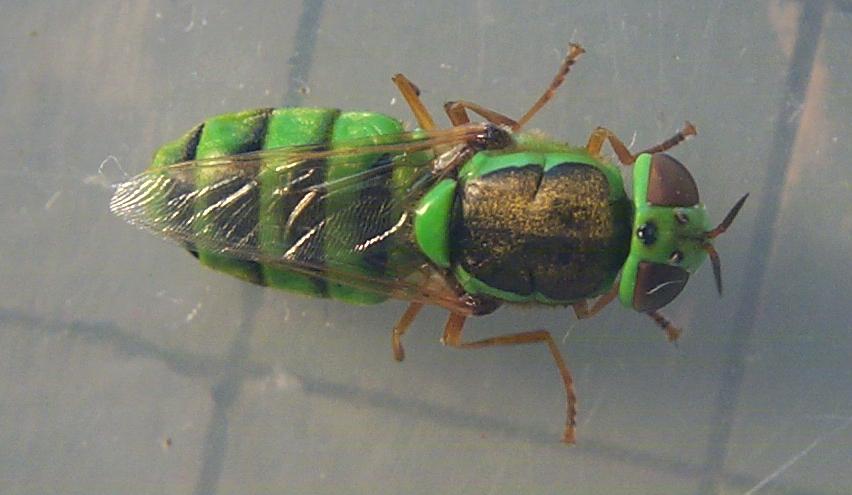
Adult soldier fly 19 mm long
Soldier fly larvae (family Stratiomyidae) are also found at Brazos Bend State Park.
The larva resemble large brown slugs, with a small protruding
head, and a mass of hair on the end of its abdomen.
|
|
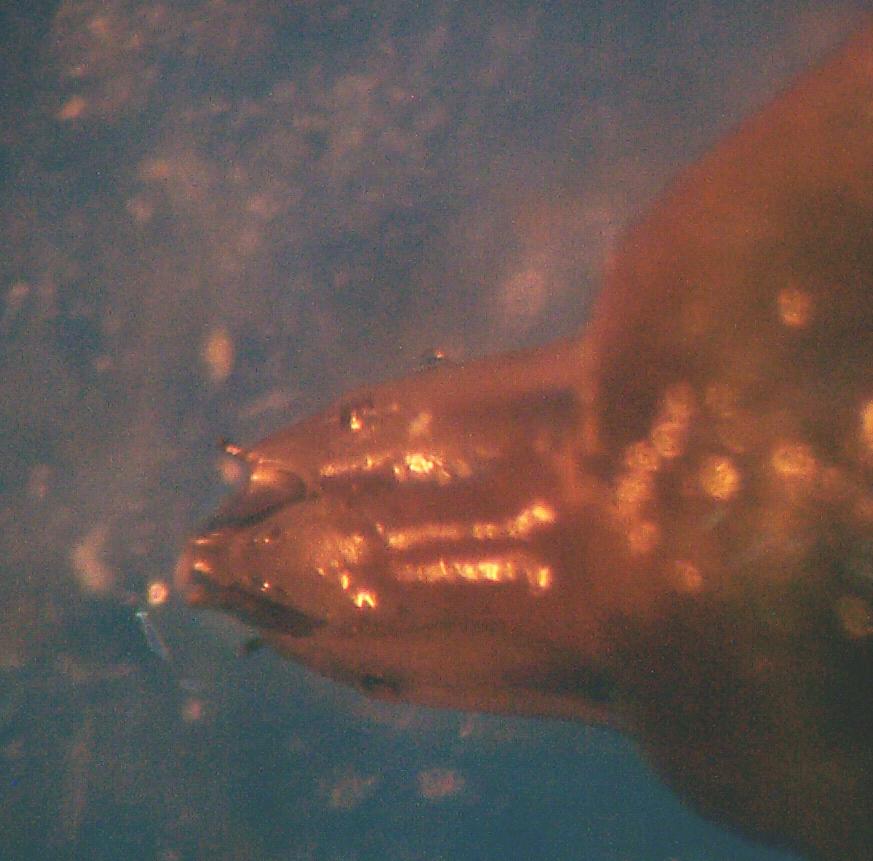
Head of a Soldier fly Larva
|
|
Soldier fly larvae feed primarily on algae and decaying plant
matter. They live in the mud at the bottom of the pond. They
resemble Horse fly larva but do not have the pro-legs, and have
the conspicuous mass of hairs on the end of their abdomens.
|
|
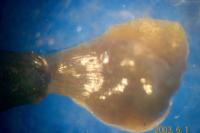
Mass of hairs on the end of the abdomen of a soldier fly larva. These
hairs keep water out of the spiracles that it uses for breathing
|
|
Next
|
Ephemerata - Mayflies |
Water Scavenger Beetle |
Prev
|
Updated: Aug 12, 2011
|

